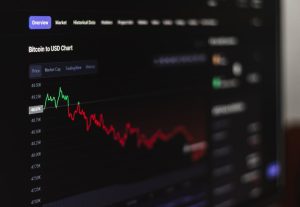Understanding Technical Analysis in Forex Dollar Peso Trading
Technical analysis is a crucial tool used by forex traders to analyze and predict future price movements in the foreign exchange market. This article will delve into the concept of technical analysis and its significance in forex trading, specifically focusing on the Dollar Peso currency pair.
Technical analysis is based on the belief that historical price data can be used to forecast future price movements. Traders who utilize technical analysis study charts, patterns, and various indicators to identify trends and make informed trading decisions. It is important to note that technical analysis is not concerned with the underlying fundamentals of an economy or a currency, but rather focuses solely on price action.
The Dollar Peso currency pair is one of the most actively traded pairs in the forex market. As the exchange rate between the US dollar and the Mexican peso fluctuates, traders can profit from these price movements by effectively utilizing technical analysis.
One of the most basic and widely used tools in technical analysis is trend analysis. Traders analyze charts to identify trends, which can be classified into three types: uptrend, downtrend, and sideways trend. An uptrend is characterized by higher highs and higher lows, indicating a bullish market. Conversely, a downtrend is identified by lower highs and lower lows, indicating a bearish market. A sideways trend, also known as a range-bound market, occurs when the price moves horizontally between a support and resistance level.
Support and resistance levels are another key concept in technical analysis. Support refers to a price level at which buying pressure exceeds selling pressure, causing the price to bounce back up. Resistance, on the other hand, is a price level at which selling pressure exceeds buying pressure, causing the price to reverse downwards. By identifying these levels, traders can make more accurate predictions about potential price movements and set appropriate entry and exit points for their trades.
Technical analysts also use various indicators to confirm trends and identify potential trading opportunities. Moving averages, for example, are commonly used to smooth out price data and provide a clearer picture of the trend. The most commonly used moving averages include the simple moving average (SMA) and the exponential moving average (EMA).
Other popular indicators used in technical analysis include the Relative Strength Index (RSI), the Moving Average Convergence Divergence (MACD), and the Bollinger Bands. These indicators help traders identify overbought and oversold conditions, potential trend reversals, and volatility in the market.
In addition to trend analysis and indicators, technical analysis also involves chart patterns. Chart patterns, such as triangles, head and shoulders, and double tops or bottoms, provide insights into potential future price movements. Traders who can identify and interpret these patterns can make profitable trading decisions based on their predictions.
It is important to note that technical analysis is not a foolproof method for predicting future price movements. The forex market is influenced by various factors, including economic data, geopolitical events, and central bank policies, which can sometimes override technical signals. Therefore, it is crucial for traders to combine technical analysis with fundamental analysis to make well-informed trading decisions.
In conclusion, technical analysis is an essential tool for forex traders, especially when trading the Dollar Peso currency pair. By analyzing charts, patterns, and indicators, traders can identify trends, support and resistance levels, and potential trading opportunities. However, it is important to remember that technical analysis should be used in conjunction with fundamental analysis to gain a comprehensive understanding of the forex market.





